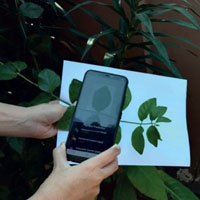Real-time assessment of plant photosynthetic pigment contents with an artificial intelligence approach in a mobile application

All claims expressed in this article are solely those of the authors and do not necessarily represent those of their affiliated organizations, or those of the publisher, the editors and the reviewers. Any product that may be evaluated in this article or claim that may be made by its manufacturer is not guaranteed or endorsed by the publisher.
Authors
The assessment of the photosynthetic pigment contents in plants is a common procedure in agricultural studies and can describe plant conditions, such as their nutritional status, response to environmental changes, senescence, disease status and so forth. In this report, we show how the photosynthetic pigment contents in plant leaves can be predicted non-destructively and in real-time with an artificial intelligence approach. Using a convolutional neural network (CNN) model that was embedded in an Androidbased mobile application, a digital image of a leaf was processed to predict the three main photosynthetic pigment contents: chlorophyll, carotenoid and anthocyanin. The data representation, low sample size handling and developmental strategies of the best CNN model are discussed in this report. Our CNN model, photosynthetic pigment prediction network (P3Net), could accurately predict the chlorophyll, carotenoid and anthocyanin contents simultaneously. The prediction error for anthocyanin was ±2.93 mg/g (in the range of 0-345.45 mg/g), that for carotenoid was ±2.14 mg/g (in the range of 0-211.30 mg/g) and that for chlorophyll was ±5.75 mg/g (in the range of 0-892.25 mg/g). This is a promising result as a baseline for the future development of IoT smart devices in precision agriculture.














